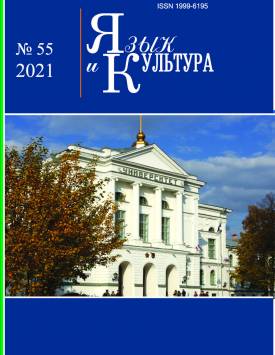The legend about Golem as a subject plot algorithm
The paper deals with the legend about Golem as a subject plot referring to the topic “a living instrument”. It is assumed that this topic includes a potential conflict between an instrument and its master. The logic of this subject plot is based on several stages of reality mastering: the necessity to have a special assistant or defender, its creation, its usage, its uprising against its master, its possible annihilation. The instrumental mastering of the world is realized in two directions: benefit and damage caused by its application. The idea of a “living instrument” contains an element of blasphemous parallel between a human being and the God irrespective of the motive which caused man to create such a servant either for the sake of practical needs or because of research interest. Aesthetically, the legend emphasizes the ugly appearance of such man made creatures. Artistically, the conceptualization of robots or any type of artificial intellect focuses either on the mutiny of machines or on empathic attempts to understand them.
Keywords
the legend about Golem,
subject plot algorithm,
a living instrument,
artificial intellect,
mutiny of machinesAuthors
| Karasik V.I. | Pushkin State Russian Language Institute | vka-rasik@yandex.ru |
Всего: 1
References
Резаев А.В., Трегубова Н.Д. Мир общения в социологическом измерении. М. : Логос, 2017. 152 с.
Утехин И.В. Взаимодействие с «умными вещами»: введение в проблематику // Антропологический форум. 2012. № 17. С. 134-156.
Cook S.E. New Technologies and Language Change: Towards an Anthropology of Linguistic Frontiers // Annual Review of Anthropology. 2004. Vol. 33. P. 103-115.
Esposito E. Artificial Communication? The Production of Contingency by Algorithms // Zeitschrift fur Soziologie. 2017. № 46 (4). P. 249-265.
Hayles N.K. How We Became Posthuman: Virtual bodies in Cybernetics, Literature, and Informatics. University of Chicago Press, 1999. 364 p.
Shaw-Garlock G. Looking Forward to Sociable Robots. International Journal of Social Robotics. 2009. № 1. P. 249-260.
Zhao S. The Internet and the Transformation of the Reality of Everyday Life: Toward a New Analytic Stance in Sociology // Sociological Inquiry. 2006. № 76 (4). P. 458-474.
Пропп В.Я. Морфология сказки. Л. : Academia, 1928. 152 c.
Неклюдов С.Ю. Мотив и текст // Язык культуры: семантика и грамматика. К 80-летию со дня рождения академика Никиты Ильича Толстого (1923-1996) / отв. ред. С.М. Толстая. М. : Индрик, 2004. С. 236-247.
Силантьев И.В. Сюжетологические исследования. М. : Языки славянской культуры, 2009. 224 с.
Лахманн Р. Дискурсы фантастического / пер. с нем. М. : Новое литературное обозрение, 2009. 384 с.
Путилова Э.А. Прагмалингвистические характеристики речи робота в американской и русской научно-фантастической прозе // Гуманитарные исследования. 2019. № 2 (70). С. 54-59.
Рыльщикова Л.М. «Мифы» и «ожидания» как концепты научно-фантастического дискурса // Вестник Московского государственного областного университета. Серия: Лингвистика. 2007. № 2. С. 75-80.

